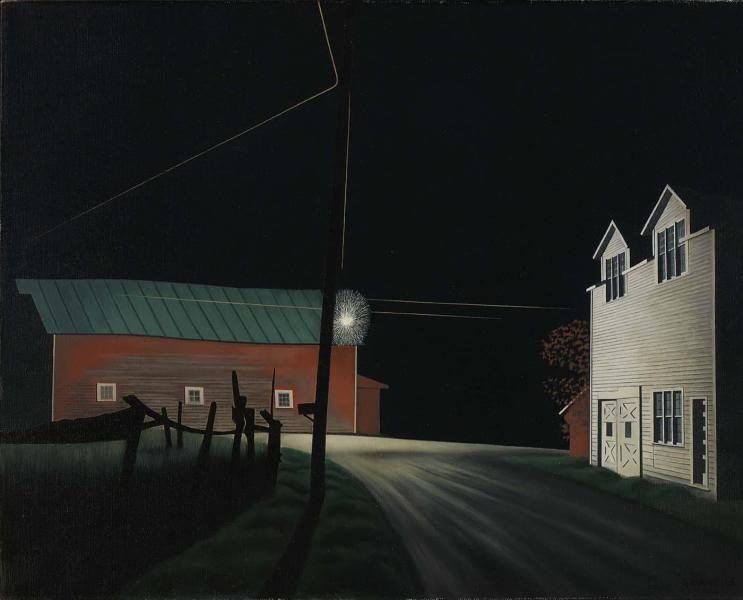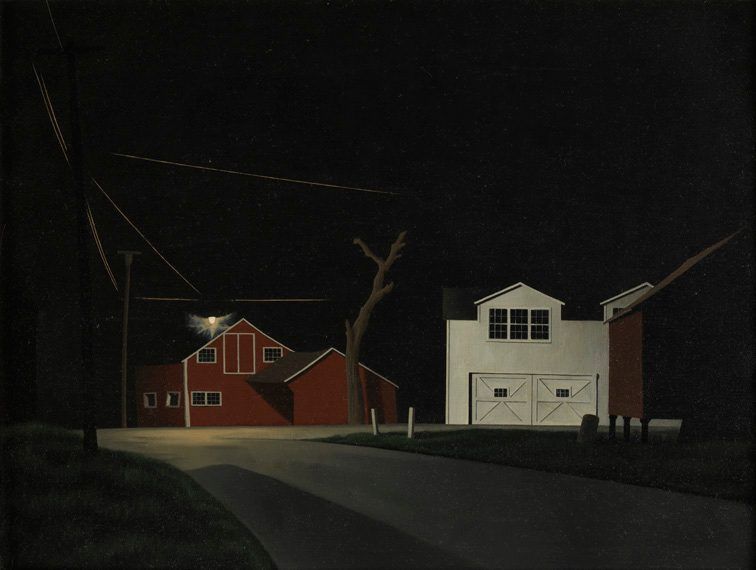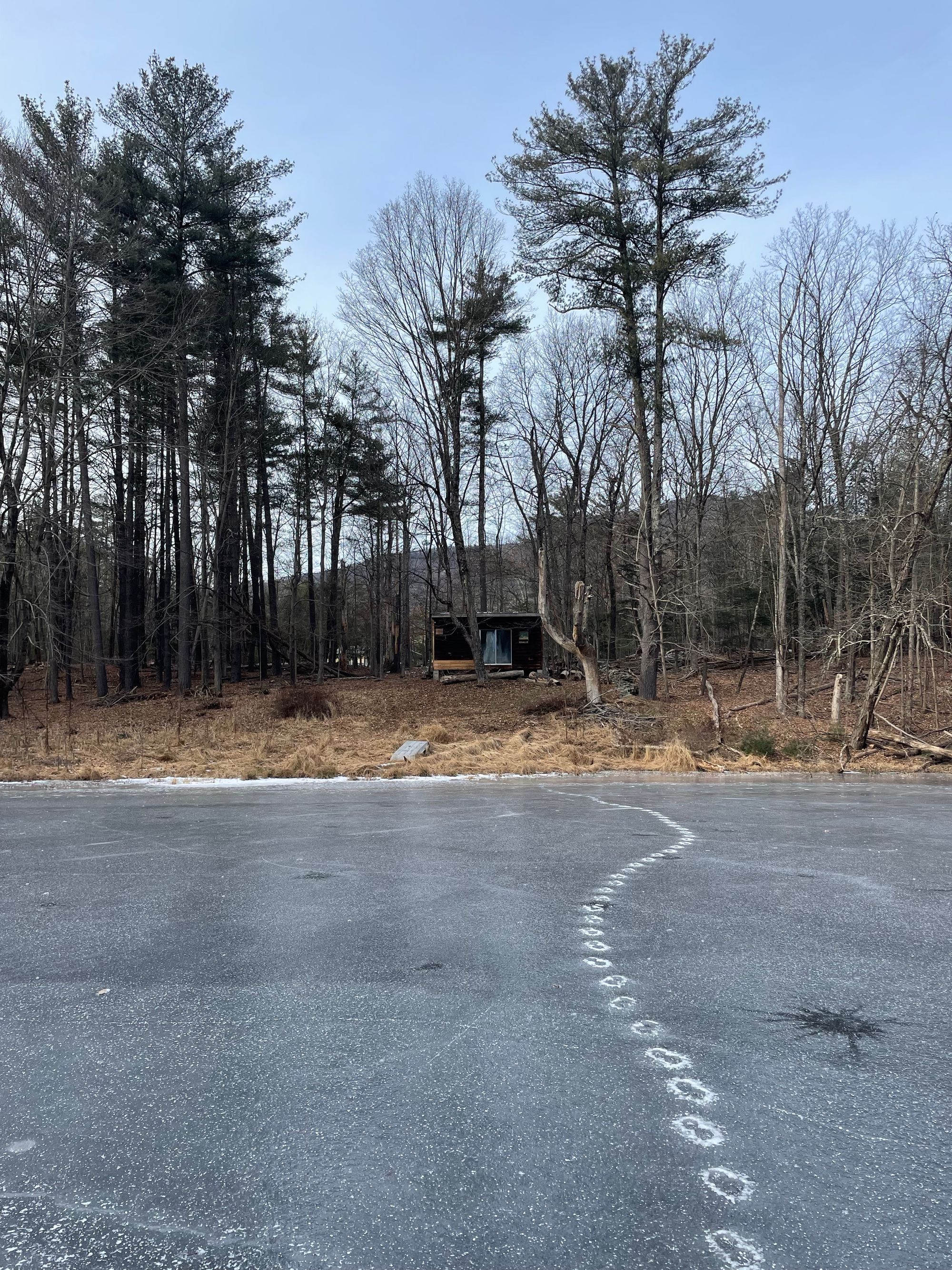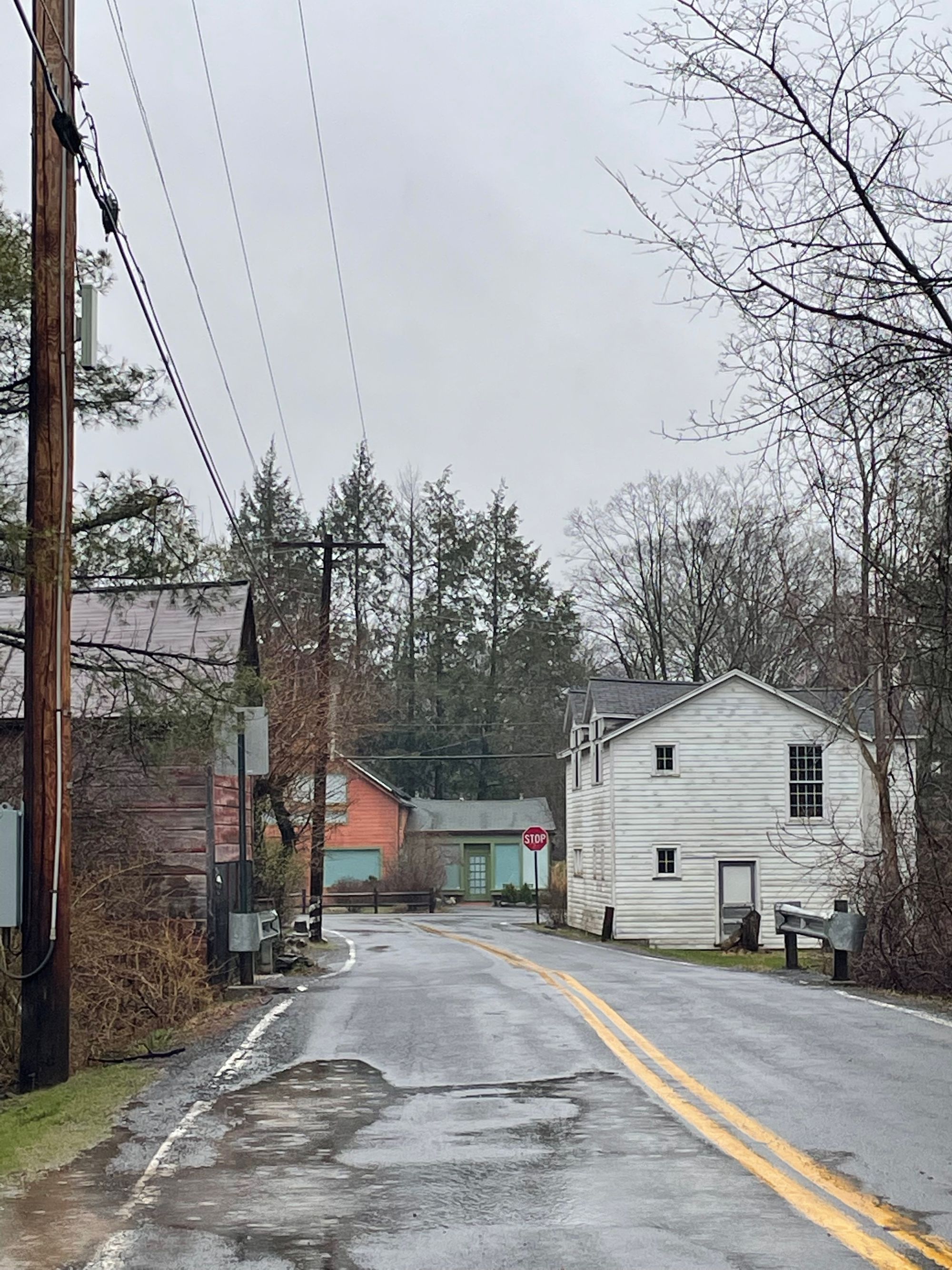a place, revered
Reverence, like a place, is almost always personal.

In Bentonville, Arkansas, just around the corner from the Walmart Museum, there exists a subtler but equally triumphant monument to capitalism. Crystal Bridges is a world-class museum of American art and despite the sumptuous collection of Bierstadts and Hoppers, admission is free, as it should be at every museum, and as it should especially be at Crystal Bridges. The museum is endowed by the Walmart heiress - it only exists, really, because of Alice Walton's largesse - and it would be crass to charge for entry when one is worth approximately seventy billion dollars. None of the excess of this rapidly accumulated museum (Crystal Bridges opened a little more than a decade ago) is remotely concealed; there is no shame in the bloat, no effort to distract from the wealth that built the walls and decorated them too. It is simply big room after big room, priceless American artwork after priceless American artwork, and then you're back in the parking lot with a keychain (not free).
I visited Crystal Bridges last November. It was a warm, late-fall Sunday and I saw the pretty pictures only in flashes between passing families. My road trip was already well into its third month and I was beginning to feel the drain of the nomadic lifestyle, a low, throbbing hum that made my knees sore and compelled me to sit whenever I had the chance. In my memory of that day, the beauty of the Innesses and the O'Keefes are matched only in intensity by a longing for home, for repetition, for familiarity.
George Copeland Ault's 1944 painting Daylight at Russell's Corners is an esteemed enough work for Crystal Bridges to display it to the public, but apparently insufficiently major to earn prominent placement. I stumbled upon it in a cramped, dark side room, clumped among a smattering of other mid-century works that seemed to share nothing in common beyond a capacity to confuse museum curators. Even in obscuration, surrounded by miscellany, I could not look away. This painting, for whatever reason, was of something I had already seen.
Daylight at Russell's Corners is a sparse image. The scene is bare, devoid of life. Even the tree placed at the center of the piece is limbless, its amputated branches covered in small, uniform mounds of snow as if to emphasize the impossibility of regeneration. Despite a caving roof on one of the barns, the buildings appear relatively well-maintained - and yet no lights burn, no candles flicker. Even amidst the dead of winter, there is no smoke emerging from a chimney (not that any are visible) to suggest habitation. The only evidence of human presence lies within the tire tracks in the deep snow but even still, that is left ambiguous. For all we know, it could be nothing more than snowdrift.
One first stands before this artwork because of the elegant color contrast, the clean lines and lack of ornamentation that lend it an austere air of the Protestant, and the mournful solemnity inherent to any winter landscape. One stays before it because of the reverence it invokes. There is meaning here, attached to this unremarkable intersection, and it's a meaning that feels divorced from religion and stronger for its agnosticism. One can only stare at this painting for so long before wondering from where that reverence originates, and what it really means.
Daylight at Russell's Corners looked familiar to me because, well, it was. When I arrived home in Woodstock, New York in late November, two weeks post-Crystal Bridges, one of my first acts was to drive to an intersection no more than five minutes away to see if those barns were still there. Maybe by seeing the place with my own eyes, I figured, I could better understand what the Corners meant to Ault.

In everything one reads about George Copeland Ault, he is presented as tormented. His youth was defined by repeated, vicious loss: familial wealth stolen away by the Depression, three destitute brothers committing suicide in quick succession, a mother dead in a mental hospital. He achieved early career success but those traumas caught up with him and he receded, both physically and mentally. By the time he landed in Woodstock - still a burgeoning artist's colony then - Ault was a misanthrope who had pushed away his benefactors and friends, a cynical man adrift in the doldrums of alcoholism and mental illness.
If there is only one thing known about Ault with total certainty, it is his obsession with Russell's Corners. He painted it five times, only once during the day, and the place carried a significance for him that transcended into the spiritual. After his death, Ault's wife Louise said that the Corners held a "mystical power" over him. That cannot be in doubt.
At first, it is difficult to detect anything beyond alienation in Ault's paintings of the Corners. The consistent emptiness of the busy thoroughfare is especially conspicuous, evidence of a man who could only make order of the world once everyone was out of frame. The buildings stand perpendicular to one another and so, from every angle Ault paints, there is always at least one building turning away from him, showing only its side or its ass to the viewer. His inanimate subjects appear detached, cold, unfeeling - the living hold no monopoly on bitterness. The bright light that burns in the center of many of the nighttime scenes only illuminates so far. Anything beyond is cast in darkness. One stares at these paintings long enough and begins to wonder if there is anything beyond at all.

One can quite easily attach larger import to Ault's Russell's Corners images. Most of them were painted during the Second World War and the feelings of existential anxiety, distance from the other, and scarcity that they evoke fit snugly into the mid-war psyche. Knowing that Ault would die in mysterious circumstances in 1948 (the coroner deemed it a suicide, making him the fourth Ault son to take his own life, although Louise contested the ruling) also imbues upon these works a sinister hue, as if they are brushstroked meditations on impending death. The solitary becomes tinged with shades of the insidious after enough time spent before Ault's landscapes. But - and this is always dangerous territory, trying to inhabit an artist's mind - I struggle to imagine Ault caring much about symbolism. His head was just too full.
Ault's years in Woodstock were all poverty and affliction. Everyone but Louise was dead, anyone still living was someone he had long ago pushed away. His earlier paintings of the town - including one of a church only a few hundred feet down the road from the Corner - are full of vibrancy and color, an indication of an earlier self not all the way empty. By the mid-40s, however, every account and every image full of murky shadows suggests that this was a man riding the last gurgles around the drain, suspended without anything solid to moor himself to. Only Russell's Corners, with its fixed boundaries and silent sterility, could deliver some kind of inner steadiness. After all, this was a place on the outskirts of Woodstock that he first discovered while waiting for Louise to return from the shops - standing there meant resisting the urge to go into town, where the lure of the bars was too strong. In those paintings, I don't see symbolism as much as I see a man in the only place where he feels the quiet of self-possession, trying to recreate that quiet, to understand it better and make it live longer.

I cannot pretend to have known George Ault but I get the sense that he lived his life atop a rapidly eroding dune. With every tragedy, he slipped further down the shifting sands until he had tumbled too far to arrest the fall and climb back up. He fled the city, fled the bustling art world that he had expelled himself from, fled a life of prestige for one of anonymity and indigence. I imagine that towards the end, right around when Ault began to paint at Russell's Corners late at night, his head must have been spinning from the jerking motion of it all. Since returning from the road, I have spent four months in Woodstock, nearly all of it alone. I do not understand Ault's demons but I do understand the jarring discombobulation of relentless movement followed by sudden stillness. And I can appreciate, amidst all that turbulence, the value that a place can hold.
A mile or so down the road from my home, in the opposite direction from what was once called Russell's Corners, there stands a dilapidated cabin abutting a round manmade pond. A small island with a faux classical vase tipped on its side rises from the water. Cars thunder past; I doubt most drivers think to turn their heads to look. And yet for me, this place is holy. I have trespassed here for a decade and when I see that pond, I see teenaged cigarettes greedily inhaled, unimaginably cloying poetry written under autumn trees going bald, a boy/man sneaking away from the omnipresence of family during lockdown, and other brightly colored imagery of youth. I see this place and I know a strange inner quiet, hear the silent cacophony of the lifting of loneliness and creeping self-doubt. It is something only I can see. Whenever someone else accompanies me, their ears still ringing with warnings of sanctity, I never fail to notice the tangible lack of awe it evokes. People are polite, they demur kindly, but I can tell. It's a dingy house and a stagnant body of water...what's so special? And the answer, of course, is nothing. It's just another place.

I visited Russell's Corners late one night last week. The midnight sky was all clouds, lending that solitary streetlight the power of the moon. Light folded over the building facades like an afghan draped over a sofa, and the shadows stretched in angles both soft and geometric. I stood where Ault would have stood with neck bent over easel, traced the outlines of barns that have not changed since his time, and tried to feel his connection to this place. It was not hard. The cars do not come, the stillness does. For someone wrestling with alienation, Russell's Corners at night delivers something - a comfortable, pseudo-purgatorial space between the world of the living and the world of the self - close to structure. Under that grey-black sky, it was easy to picture Ault spending tortured, unending days thinking only of being there, at night, free of all the noise.
I did not stay long. I could understand what this place meant to Ault, trace the outline of his reverence, but it did not mean that to me. I have my own place, a small cabin abutting a pond where everything comes together to allow me to know that so rare thing, self-possession. Reverence, like a place, is almost always personal.
In 2011 - the year of Crystal Bridges' founding - the Smithsonian put on an exhibition of 1940s American art, with a focus on Ault's Russell's Corners paintings. The curator, a Yale professor named Alexander Nemerov, sought to present Ault as not simply a wartime painter but a painter of wartime, asserting that Ault's bleak wartime imagery was an apt reflection of the "anxious tenor of life on the home front." Ault's paintings certainly conjure an anxious tenor; whether or not that tenor encompasses anything more expansive than the home front of his own embattled psyche is a question where Nemerov and I would likely disagree. In any case, the exhibition was titled "To Make a World." It was a fitting title for a show about a man who seemed able to find peace only by making and remaking the same world time and again, all the world caught under drooping streetlight his.

